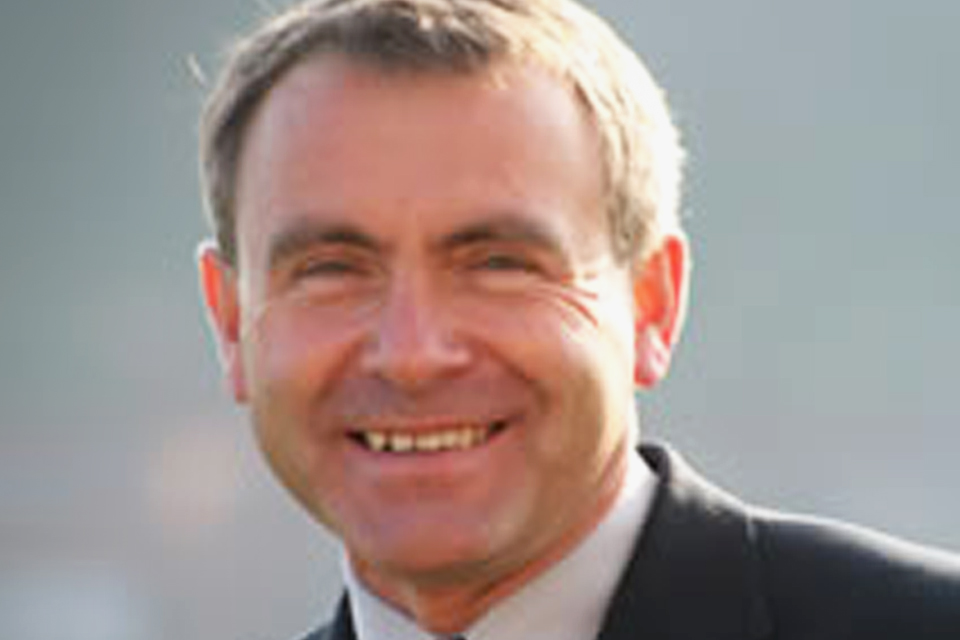UK Rail Industry Representatives and Middle East Rail Exhibition
Robert Goodwill speaks about rail capacity, passenger satisfaction, the railway supply chain, engineering and the Rail Supply Group.

Thank you Consul General for those words of welcome.
I’d firstly like to add my own very warm welcome to our guests this evening.
Thank you for coming and I hope that this evening you get a chance to hear more about our Great British rail products and services.
Because we have a very successful and growing railway, and that is, in no small part thanks to the UK based companies in our railway supply chain.
And many of those companies are represented here this evening.
UK rail
Since rail privatisation in the 1990s, UK passenger numbers have doubled and freight traffic has risen by 60%.
There are 4,000 more services a day than 15 years ago.
In the next 5 years we expect a further 14% rise in passenger numbers and 4% more freight.
So we’re moving more people on the railways than any time since the Second World War – when the network was considerably larger.
Passenger satisfaction continues to improve and we have a safety record to be very proud of.
We are now investing in several major infrastructure projects to deliver additional capacity and support economic growth
We’re building Crossrail, a new east-west rail line across London, which will open in 2018, and boost the capital’s rail capacity by 10%.
We are also investing in Thameslink line to significantly boost north-south services through London.
My department has committed more than £38 billion for Network Rail to run and improve the network between 2014 and 2019.
And having travelled on your wonderful new metro here in Dubai this afternoon I am conscious that our underground system is a little older having just celebrated its 150 birthday. But we are investing heavily in the London Underground with new signalling and rolling stock and mainline projects such as the The Electric Spine - a new electric passenger and freight corridor linking centres of population and economic activity in the Midlands and Yorkshire with the south of England
We are also making detailed plans for our second high speed line linking London with Birmingham, Manchester and Leeds - like many of our European partners, we too have been operating trains at 186 miles per hour for many years now.
All this adds up to the biggest rail investment programme for generations.
Supply chain
And we are also supporting our railway supply industry to take advantage of this domestic success and to export more of their products and services.
The global market for rail is huge and growing fast. It accounted for more than €100 billion in 2010 and is forecast to grow at nearly 3% per annum over the next 5 years.
Heavy rail is the largest rail application segment while light rail, tram and metro is expected to be the fastest growing.
The UK rail supply chain employs 80,000 people, and has a combined turnover of £7 billion.
As well as international companies like Alstom, Siemens and Bombardier, we have a diverse range of smaller companies offering world class products and services.
Britain has a strong reputation for engineering in sectors like automotive and aerospace. But the government is also working closely with the rail industry to invest in skills, research, development and innovation.
A new national rolling stock training academy will open in Northampton next year, supported by over £3 million of government funding.
This joint initiative between Siemens and the National Skills Academy for Railway Engineering will help to meet our skills needs. In its first 10 years of operation, the academy will train over 17,000 people in a wide range of traction and rolling stock technologies.
My department is also investing heavily to support greater innovation in rail. Over the past 2 years we have provided £30 million to the industry’s Enabling Innovation Team (EIT) to develop and demonstrate innovative concepts.
Projects underway include a battery powered train, a competition to develop sophisticated overhead electrification for HS2, and an initiative to reduce the cost and environmental impact of light rail.
There’s been a tremendous response so far to EIT’s work. And I’m very optimistic that the projects and demonstrations it’s supporting will be exported around the world.
Finally I wanted to mention a new body – the Rail Supply Group – that brings together my department, colleagues at the Department for Business, Innovation and Skills and the rail supply chain. It’s being headed up by Terence Watson the UK president of Alstom.
The group will be supplier led and will aim to strengthen the UK rail supply chain so it is better able to win work at home and abroad. An early priority of the forum will be helping small and medium-sized enterprises expand into overseas markets by partnering them with large companies who have the necessary experience and contacts.
Britain’s rail network is a huge success. And with passenger numbers growing faster than any other railway in Europe, we have the skills to help other fast growing countries like the UAE and other Gulf states.
Thank you